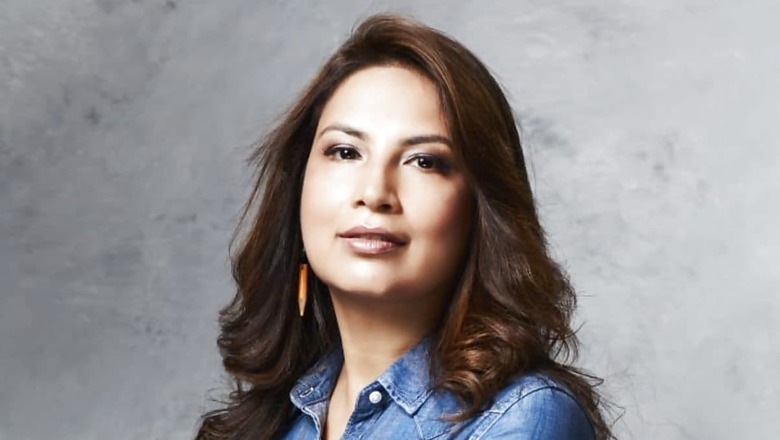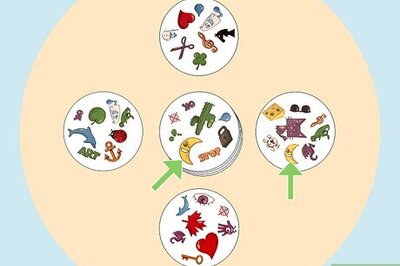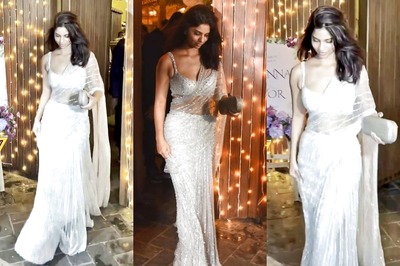
views
Samira Koppikar is one of the few leading female composers of the country. She made her breakthrough with Anushka Sharma starrer NH10, in which she had belted the melancholic ‘Maati Ka Palang’. However, her prominence skyrocketed when she went on to collaborate with Arijit Singh for chartbuster songs like Mohabbat Barsaa Dena tu and Aaj Phir Tumpe Pyaar Aaya Hai from Creature 3D and Hate Story 2 respectively. Besides being a melodious playback singer, Samira has composed music for Laal Kaptaan and Bareilly Ki Barfi.
But Samira Koppikar’s musical sensibilities doesn’t end with commerical realism. She is also a thriving independent artists with songs like Bebasi, Kaanch Ke and Mashaalein. Samira added another feather to her cap with her brand new album ‘Sang Baarishon Ke’ consisting of four soulful songs. In an exclusive interview with News18 Showsha, Samira shared her journey behind the album.
Here are the excerpts:
Tell us something about your album.
and what’s the story behind it and what kind of genres it’ll be touching upon?
“Baat Kya Hai” (released on July 20th) is a romantic song about moments when you are perceiving your lover through all your senses, being one with nature. The winds whisper sweet nothings; you can feel the beloved’s presence in the sounds of the sea or a wafting fragrance. It’s a unique and catchy melody, upbeat with a Bossa flavor, foot-tapping, and it draws you into its vibrant space. penned beautifully by the talented lyricist Shelle. It features clarinet playing by Shankar Tucker rendered in an unusual fusion style. It’s been interesting to explore a new Sonic realm with this song.
The second song is called “Sang Baarishon Ke.” It is special since it is one of the first songs that I’ve written lyrics for. The vivid imagery, the lyrics, and this soulful melody came to me simultaneously. The music is deliberately minimal so as to keep the vocals upfront. The soundscape comprises only acoustic guitars, live cello, and some ambient elements that give the song an intimate and relatable feel. The song drifts lyrically into a parallel English verse. It’s very different from what one has created and vocally rendered before.
“Boondon ki Saazish” is a song that captures the romance of the monsoons. when one feels like dancing in the rain or going for long drives, taking in countless shades of green. The mood is happy, spontaneous, and groovy, and another song features my lyrics. Musically, a pop song with guitars and an energetic beat driving the lilting melody and vocals
“Iss Dil Ka” is a melancholic song where one is pining for the beloved. The heart is helpless, and so begins a tug of war between the heart and mind. The soulful melody is beautifully complemented by the lyrics by Yash Eshwari. The musical arrangements are soft rock, featuring guitars and an electric solo that has an Indian classical touch, and drum beats that drive the melody of the song. misty monsoon mood for those who can relate to the pain captured by this haunting melody.
I like the arrangement of “Baat Kya Hai.” and your vocals added life to it. What was the idea behind that composition, and what did you do to melodically achieve it?
Thanks. Glad that you like “Baat kya hai.”
The melody organically drifted into my mind when I was jamming with the lyrics. It turned out to be unique as it unfolds and leads to a catchy, foot-tapping chorus. I’ve used the clarinet in a fusion style of rendering. Sonically, I have tried to push my creative boundaries by experimenting and trying to create a new sound with this song.
This is your first independent EP. Previously, you had only collaborated on indie singles. So what really compelled you to explore this indie space with an EP? And what all did you learn during the process of creating it?
In the independent space, one experiences complete freedom in expression and the extension of one’s own musical vision. What better way than to put together a collective of songs that are unique, with your own storytelling and sound?
Evolution happens when one experiments; that has been the beauty of this creative experience. One reflects on and understands one’s musical strengths and weaknesses. There’s nowhere to hide. My strength is melody and relatable, lyrical story-telling. I’ve been exploring new sounds and discovering my sonic identity through this journey.
As opposed to male composers, do you believe female composers have a hard time gaining footing in an industry that is largely male-dominated?
I feel that creation is beyond gender, and yet it makes a difference to some people. I have actually had some hilarious experiences. When I was at Yashraj Studios for a project, I was mistaken for an actress who had come in for an audition. The person concerned couldn’t believe that I’m a music director.
Another backhanded compliment that I received was that “you are quite clear-headed in terms of your musical vision, in spite of being a woman.” to which I replied to the director, saying that “sir, that’s the most layered and critically nuanced compliment that I’ve ever received.”
Overall, I have not had an issue, as people generally appreciate and value talent. The music speaks for itself.
What’s the most exciting part of being a musician? And what do you enjoy the most? Creating music for movies or OTT, or creating something independently?
I enjoy both, as they are challenging in their own way. When one is creating for a film, there’s a brief in terms of the film’s script, characters, and the filmmaker’s vision that one needs to keep in mind.
Indie music is your own vision. There’s no brief; the topics and musical spaces to explore are endless. It is a space where one can create a unique sonic identity.
I see a lot of folk influence in your music. Whether it was Laal Kaptaan or NH10 So over the years, how did you develop an affinity for folk music, and do you consciously incorporate folk elements in your songs or does it happen organically?
Folk music sprouts from Mother Earth. It is ancient, rooted, rich, and authentic. Hence, I’ve always been drawn to and inspired by it. I have been trained in Hindustani and light classical forms of music as well. During the process of learning, I have been exposed to forms of music like Thumri, Kajri, folk tunes, ghazals, and bandishes, but somehow I haven’t consciously used these elements or note patterns. One of my gurus shared words of wisdom: “It is important to unlearn what you’ve learned to be able to truly create on a blank canvas.” The process of creation is effortless and organic for me.
You are definitely a talented composer. But speaking strictly in the context of Bollywood, why is it that we don’t get to hear more music from you compared to other artists? There is a huge gap between NH10, Bareilly Ki Barfi, and Laal Kaptaan.
Thanks for the compliment! Bollywood music for feature films is created way in advance. Nobody can predict when the music or films will release. There are films that one has composed for, but when that music or the films will release is uncertain. I keep creating music nonetheless. Film or non-film is the destiny of the song or songs. There are some projects in the pipeline; hopefully, those gaps that you mention will reduce in time.
As a follow-up, when I think about female composers in Bollywood, only two names pop up in my mind (in the present era, of course). You and Sneha Khanwalkar So, of course, there is a male-to-female disparity there, which in turn discourages up-and-coming female composers from even venturing into that space. What do you think can change that dynamic in the coming years? And what do you have to say to the budding female composers who might be interested in this space?
In today’s time, there are many more female singers, songwriters, and composers in the indie space. They are possibly still transitioning to creating for Bollywood films if they choose to. I would say that they should keep at it. One needs to view oneself as a musical content creator, irrespective of gender.
It’s a different experience to create for films. There are lots to understand and consider, like the vision of the film maker, the script, the characters in that context, and commercial viability with respect to music companies. It’s a tough task to find a balance, but one learns the ropes in time.
Recently, there’s been a trend of songs by indie artists being licensed for films or series as well, once they gain traction. which is a good sign and encouraging as well!
Over the last couple of years, we have seen people shift to independent music. And the audience keeps growing steadily. Do you think the future of music is independent and not Bollywood? Considering Bollywood is still going through the remix and remake phase,
This churn is good for creativity in general. Mediocrity has been thriving in the music space for a while now. Bollywood music has been going through ups and downs post-pandemic. Recently, the market has opened up, as independent music has been doing well and growing. Audio consumers are discovering new artists on streaming platforms; the gap between music creators and consumers has become marginal. Social media and the exploding audio space have fuelled this indie music surge.
I believe that the future belongs to good-quality music, irrespective of whether it is film or indie. since consumers shall not just digest anything and everything that’s pushed down their ears. They have the power of choice, and AI predicts and brings up possibilities accordingly.
What will be your focus in the coming months? Would you like to explore the indie space more, or would you prefer to explore opportunities in Bollywood or OTT?
I plan to explore both spaces equally. I will be putting out my indie music consistently, with 7 more songs till the end of this year.
In the Bollywood space, there are some interesting collaborations, including a song that I composed for the title track of an upcoming feature film. I’ve featured IP Singh, lead singer of the band Faridkot. I’ve composed a very catchy Punjabi song for an upcoming series, and I am planning to feature the Nooran sisters on this track.
There are some non-film collaborations with artists like Anand Bhaskar Collective and Sanam in the making.
Also, since you compose and sing, Does it get draining to juggle between these two roles?
Both these roles—composing and singing—are symbiotic and fuel each other’s growth too. It’s not easy to juggle with these, but one is up for the challenges that come along since passion for music itself is the driving force.
You have sung some evergreen and all-time chartbuster songs with Arijit Singh. What was it like singing with him? And what can you recall about those recording experiences?
A humble, talented, and pure soul describes this amazing musician, Arijit Singh. He has effortlessly taken songs that I’ve composed to another level. treated me with the utmost respect, even though I was new in the Bollywood music composition space. As a co-singer, she is extremely inspiring too.
even after I was satisfied with the vocal takes that he delivered. He himself rendered them a few more times until he was satisfied. The mark of a true artist is that their music speaks volumes for itself.
Lastly, share some of the challenges that you have faced in the music industry and how you managed to overcome them and shine regardless.
Initially, certain people would not take a young female music composer seriously, which would be frustrating at times. I have faced taunts and challenged that one shall not last as it’s a tough industry. I’ve been focused, determined, and consistent. Now I feel like I’ve not just become thick-skinned; I’ve grown scales! Egos are big, and at times one feels like people skills, networking, etc. are as important as one’s creativity. There’s an acceptance that this is part of the process; one has to evolve and make things happen. Rather than ranting, let the music speak.



















Comments
0 comment